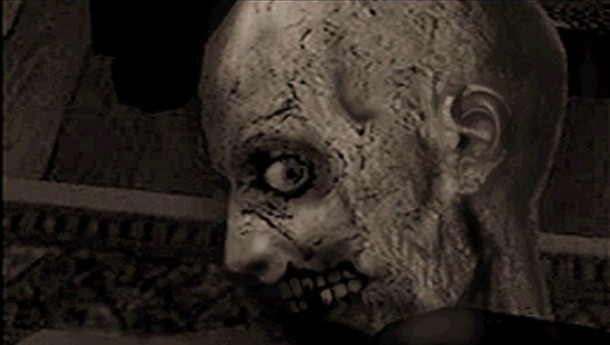Please support Game Informer. Print magazine subscriptions are less than $2 per issue
Does Resident Evil Stand The Test Of Time?

Even though we have just entered a new console generation with brand new experiences, every so often our thoughts turn to the games of our past. These formative experiences shaped who we are as gamers today, and sometimes we remember things just a little bit more favorably than we actually experienced them.
In some cases, the rose-colored glasses become thick. Our memories of games gone by become heavily tinted with the hue of nostalgia. In others, we remember the goofy and absurd, but forget that underneath are still experiences that have value despite the absence of more recent technical advances.
I came to the Resident Evil series very late, and only after recognizing it was a giant hole in the fabric of my gaming experience. I played the original title in the series for the first time last year on my Vita and was surprised at how much I liked the 1996 game.
When people talk about Resident Evil today (the original, and not the Gamecube “REmake”), images of terrible full-motion video and sound clips of atrocious voice acting often surface first. And, yes, the tank-like controls are far from ideal.
However, the core concepts that form the basis of modern survival horror are still as potent today as they were almost two decades ago. Dodging the undead in the narrow hallways isn’t easy thanks to the controls, but doing so to conserve ammunition is the smart way to play.
Magical storage trunks that teleport your items around the gothic mansion is an absurd concept, but it allows players just a bit of much-needed flexibility. However, some items shouldn’t be constrained by carrying limitations.
Restriction on inventory is an important part of survival horror but the process of collecting typewriter ribbons (each of which represents one opportunity to save) from a crate, saving, and then returning the extras to the magic box is silly. It's time consuming, and since the ribbons are limited, there's no need for the added tension (and time spent) juggling them in and out of boxes.
Resident Evil’s approach to inventory isn’t entirely confounding, though. Once you’ve used a key in the last matching door, it’s discarded, freeing up a spot. Combining different colors of curative herbs not only frees up space in your pockets, but also creates items with greater potency.
The level design also shines, despite the very low polygon count. Wherever there is a staircase, there is likely a safe room. The puzzles are crafty and evoke a point-and-click foundation. Most importantly, areas aren’t repopulated by the same enemies after being cleared out. This is a little thing that balances the almost punishing inventory management on the default difficulty.
So, does Resident Evil stand the test of time? Yes.
The level design, puzzles, and core concepts still have great value. Despite the dated graphics, terrible voice acting, and corny FMV, Resident Evil set the stage for the entire survival horror genre. There is a reason why people are excited for Shinji Mikami’s upcoming The Evil Within, and his work on Resident Evil is a big part of that.
If you haven’t played Resident Evil (or want to revisit it for the sake of nostalgia), I’d recommend playing it on a Vita rather than a PS3. The graphics are a bit easier to digest on a lower resolution screen, and you won’t be sacrificing controls. Additionally, putting the Vita to sleep means you can pick up exactly where you left off, which is something you can’t do on the PS3.










